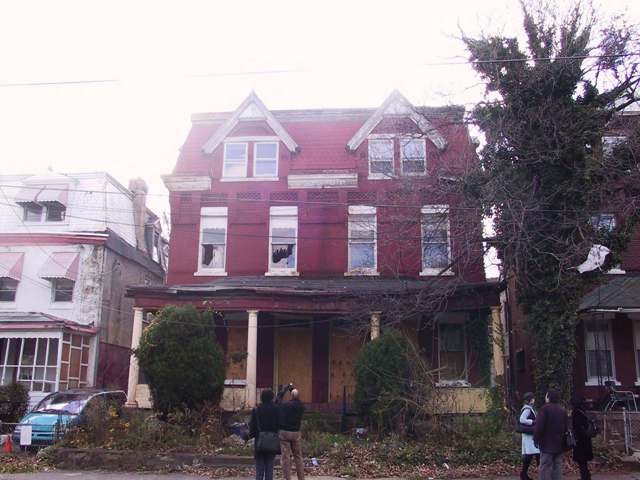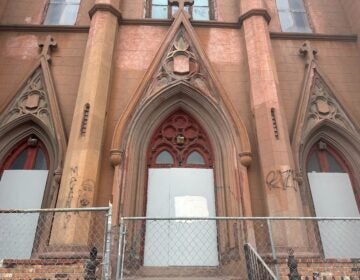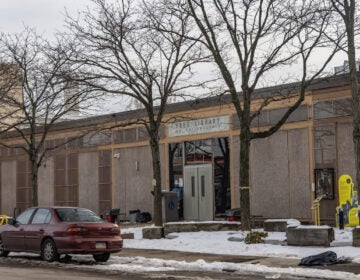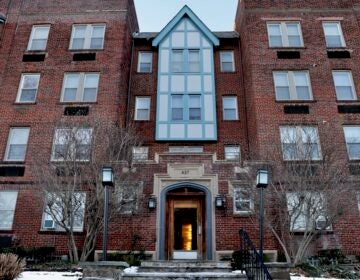City-wide heritage conference a first

Learn about proposal to rehab 6 vacant units on West Tioga Street for low-moderate home ownership
May 12
By Alan Jaffe
For PlanPhilly
The history of Philadelphia is not limited to the familiar sites at Independence Mall and in Old City. Different chapters are found on every corner of the city, reflecting stories of individual achievement and communal strength.
The Preservation Alliance of Greater Philadelphia hopes to help each community recognize and celebrate its heritage and identity with the first city-wide conference devoted to “A Sense of Place: Preserving Philadelphia Neighborhoods,” on Friday, May 15, at Temple University Center City.
Educational workshops on organizing, advocacy, funding, networking, commercial corridors, religious properties and other topics will be directed toward community leaders interested in utilizing preservation as a tool for the economic, aesthetic and civic development of their neighborhoods.
“In an historic city like Philadelphia, history and sense of place are everywhere,” said Patrick Hauck, director of Neighborhood Preservation Programs for the Alliance. “Preservation with a small ‘p’ applies across the board.”
The Alliance hired Hauck four years ago to find ways to incorporate preservation into neighborhood activities. The effort began with outreach to already existing groups who were seeking local designations, historic markers or access to resources, and with homeowner workshops for individuals. “But one of the things we realized had never really happened in Philadelphia was to bring together all the different players from the variety of neighborhoods in one spot, and let them see what each other is doing and learn what other organizations have available,” Hauck explained.
With funding for the conference provided by the William Penn Foundation and the Pew Center’s Heritage Philadelphia Program, the Alliance partnered with the city Planning Commission, Office of Housing and Community Development, Community Design Collaborative, Institute for the Study of Civic Values, National Trust for Historic Preservation and other groups “who have a finger on what can be utilized in different neighborhoods to bring them together,” Hauck said.
Finding the money to accomplish preservation projects is a challenge common to all the neighborhoods. “I think what we bring to the table is directing them toward potential funding sources, as limited as they are,” Hauck said. “But we can also help them take the funding they are using and maybe apply it differently to their projects.” By incorporating preservation into their projects, including commercial development, they may spend the same or a little more for a much better product, he said.
A conference session on “Affordable Housing and Historic Preservation” will demonstrate that community development corporations working on housing development can utilize a combination of tax credits.
“Preservation doesn’t mean you have to have a lot more money, that it’s only for the most elite of neighborhoods,” Hauck said. “It can be used across the board to strengthen all neighborhoods.”
At the same time, explained Melissa Jest, Neighborhood Preservation Program coordinator for the Alliance, it’s important to refocus groups away from the emphasis on money and toward “what assets they have within their organization and what additional value they can find by partnering with other organizations. Then they can focus on tapping those human resources, people’s ability and willingness to volunteer, donate their time, and do other things that pull projects together. This perspective is important to keep the momentum going, even in a recession.”
Jest traveled to Washington last January to spend the day with Patsy Fletcher, community outreach coordinator for the Historic Preservation Office in the District of Columbia Office of Planning. Fletcher, who will be the keynote speaker at the May 15 conference in Philadelphia, has found “you have to break preservation down to very understandable terms, because a lot of folks assume it’s a high-minded activity for people with letters behind their names,” Jest said. “So it’s a matter of understanding what people want for their neighborhoods. Those wants are the same no matter where you are, no matter the economic class or cultural background. Everybody wants a safe, clean neighborhood that they can feel comfortable in and feel pride in. Patsy has found that historic preservation, when presented as a tool, can help people achieve those things.”
The families of one Washington neighborhood, Deanwood, each had family archives that traced the African-American migration to the area since the 1900s. Motivated by Fletcher, they put their records together and published a book about their community’s history.
Many neighborhoods in Philadelphia also are motivated to preserve their past and honor it in the present. A revitalization effort in West Philadelphia began with a resident who showed Hauck a photo he had of the Rev. Martin Luther King speaking at a rally on Lancaster Avenue in the mid-1960s. As a result, a marker and bust of King will be erected there. But now the project also involves several organizations and neighborhoods working on new landscaping and renewal of the commercial corridor.
A woman in Germantown asked Hauck for help to save a beloved building on her street. It turned out that five buildings on that street were already on the Philadelphia Register of Historic Places. People from adjacent blocks joined in the effort to preserve the structures, realizing “one historic block was an anchor” for the community, Hauck said.
During an educational session entitled “Celebrating Philadelphia Neighborhoods,” a representative of the Yorktown community will describe the struggle to retain its identity amid the expansion of the Temple University campus. Residents were concerned that the spread of student housing was displacing the character of the neighborhood, Hauck said. They decided to create a historic district that preserved buildings that had been erected to keep African-American families in the city.
“This was a case of getting people to look at what preservation means. It’s not all just, ‘George Washington slept here.’ It’s about the full history of the city.”
And it’s more than the built environment, Jest said. The community also celebrates a Yorktown Day every August, “because it’s an opportunity to educate. It keeps the oral histories alive.”
“It’s one of those cases where people in the neighborhood take it further than we thought about. They’re seeing with the eyes of someone living there, and the connection with the past and the whole sense of place,” Hauck said.
“They are instilling historic preservation as an ethic, a value that a community adopts and passes along to its next generation,” Jest added.
While about 100 participants attend some of the eight educational sessions at the conference, a group of experts will be choosing two winners of $1,500 grants to be presented that afternoon by the Alliance. The applicants for the Neighborhood Preservation Project Awards are the 50th Street Neighbors for beautification of 50th St. and Woodbine Ave.; ACORN and Broad-Olney Neighbors for a historic photo display; Awbury Arboretum Association for a consulting service; Kingsessing-5th Division Community of Neighbors for the Kingsessing-Carnegie Awareness Block Party; Lansdowne Avenue Business Association and the Philadelphia Chapter of Senior Citizens Bureau for the Lansdowne Avenue Talks newsletter; Mount Airy Revitalization Corp. for a Mount Airy documentary; Neighborhood Interfaith Movement for the Germantown Speaks oral history series; New Kensington Community Development Corporation for the Delaware River Lost-Found Scavenger Hunt; Passyunk Square Civic Association and South 9th Street Businessmen’s Association for the 9th Street Italian Market website; Powelton Village Civic Association for the Powelton Sesquicentennial Campaign; Tioga United for the Tioga rehabilitation/homeownership project; and Vineyard Community Church for the Historic Houses of Worship resource guide.
Following the 8:30 a.m. breakfast, a plenary session at 9 a.m. will present information about the new Preservation Philadelphia website, which invites residents to submit photos and information about landmarks that can be accessed on an interactive map of the city.
“A Sense of Place: Preserving Philadelphia Neighborhoods” will be held from 8:30 a.m. to 3:30 p.m. at Temple University Center City, 1515 Market St. For a full schedule and information or to register, go to www.preservationalliance.com.
Contact the writer at alanjaffe@mac.com.
WHYY is your source for fact-based, in-depth journalism and information. As a nonprofit organization, we rely on financial support from readers like you. Please give today.






